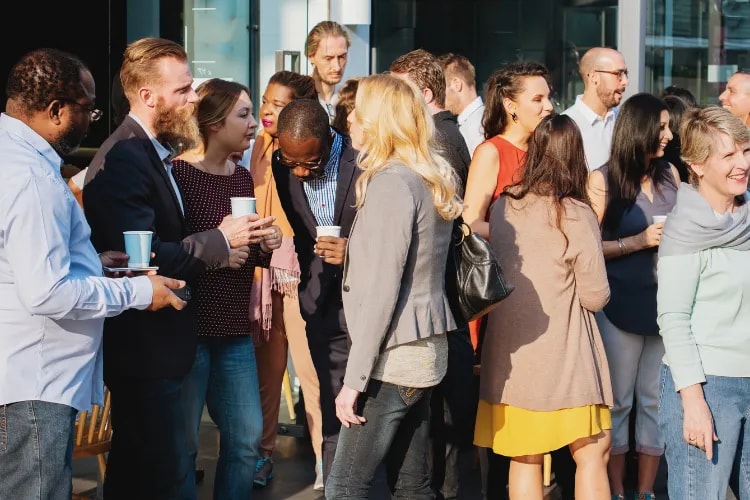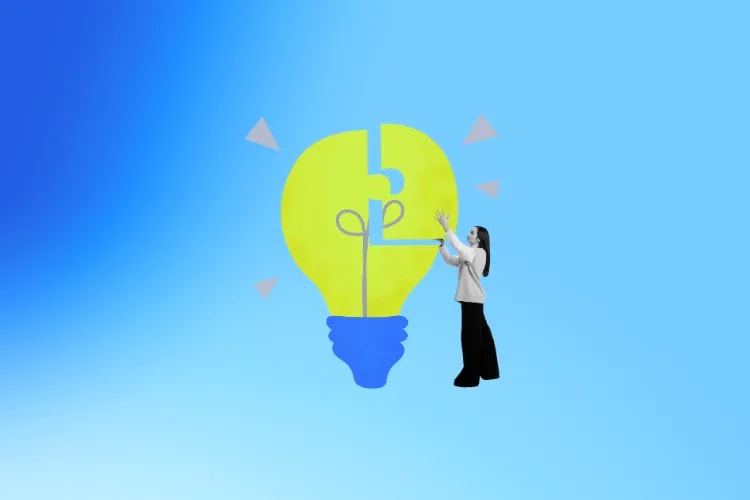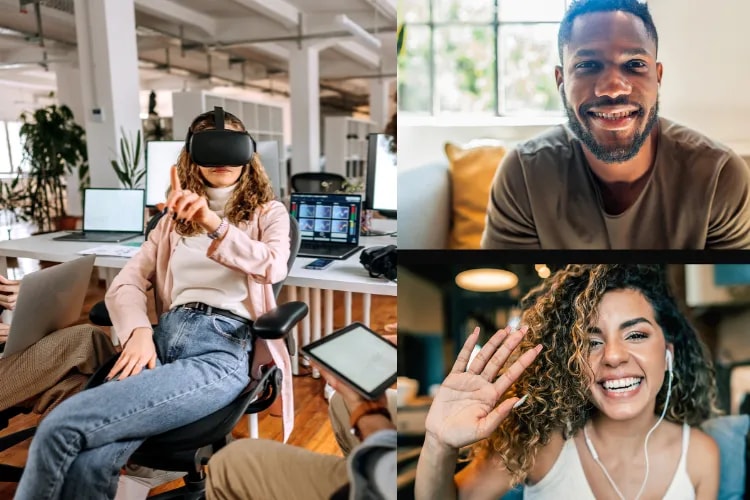
planning
Networking is changing fast. In 2026, attendees show up as discerning consumers who expect personalized, human-first experiences—not nametag-and-nibbles mixers. The most effective networking event ideas now prioritize meaningful interactions, curated matches, and formats that help people learn by doing.
Industry research echoes this shift. Attendees want relevance, smaller high-intent moments, and value-led design. Positioning networking as a curated journey—before, during, and after your event—dramatically improves satisfaction and the quality of connections. PCMA’s 2025 trends report describes attendees as consumers first, favoring personalized and purpose-driven event design. Read more here.
Design networking as a curated, purpose-driven experience—not a generic mixer.
Below are nine creative networking event ideas—grounded in attendee behavior and practical execution—that will help you spark genuine connections in 2026.
Hands-on formats consistently outperform passive panels for engagement and retention. Interactive workshops transform strangers into collaborators by having them practice, build, and teach together. Instead of a talk-about AI marketing, host an AI prompt lab. Rather than a leadership keynote, run a feedback dojo where attendees swap real coaching. This approach breaks the ice naturally and delivers tangible value.
Digital marketing practice labs: AI prompts, UGC strategies, conversion experiments
Leadership skills dojo: coaching frameworks, feedback sprints, conflict role-plays
Product and UX mini-jams: ideation rounds, sketching, rapid usability testing
Revenue clinics: pricing experiments, negotiation scenarios, pipeline reviews
Use small groups (4–6) and rotate participants every 20–30 minutes to maximize new connections.
Center on doing: hands-on tasks, peer teaching, and live feedback over slides.
Provide role cards (facilitator, timekeeper, note-taker) to ensure inclusive participation.
End with a share-out: teams present one actionable idea and swap contact details.
Example: Run “Effective Communication Strategies” with three mini-stations—active listening drills, concise story arcs, and on-your-feet Q&A. Participants record 30-second pitches, get peer feedback, and leave with a confidence boost and new collaborators.
Planning a hands-on format? Use our comprehensive event planning checklist to structure content, staffing, and room flows.
Theme-first mixers lower social friction and make conversations easier to start. When the theme reflects your attendees’ identities and priorities—sustainability, local culture, or innovation—people instantly have something to talk about. It also shapes décor, music, F&B, and activations for a cohesive experience.
Innovation in Tech: demo corners, “pitch in 60 seconds,” AR photo ops
Sustainability in Business: local suppliers, zero-waste challenges, impact storytelling walls
Hometown Heroes: local art, regional bites, community partners, neighborhood scavenger maps
Future of Work: flexible-career swaps, portfolio clinics, wellbeing corners
Create conversation prompts tied to the theme at each table, add color-coded lanyards for interests, and end with a show-and-tell of the top three ideas surfaced. For a bigger audience push, pair your theme with bold creative—our roundup of creative event promotion ideas can help your mixer stand out.
Taking your networking outside pays off. Time in nature has been linked to improved attention, creativity, and group cohesion—exactly what teams need to build trust and solve problems together. Even light, accessible activities can reset the energy of a multi-day conference and deepen bonds.
Guided urban hike or photo walk with conversation prompts at scenic stops
Kayak or paddle meetups on calm water with buddy rotations
Trail clean-up + picnic: service activity followed by small-group debriefs
Low-ropes challenges: cooperative tasks focused on communication and trust
Safety matters: offer multiple difficulty tiers, share packing lists, and provide guides. Build inclusive options (quiet groups, mobility-friendly routes) and a weather contingency plan. Wrap by circling participants into reflection groups to turn shared challenge into shared insight.
Want to amplify the experience? Set up a simple photo quest—teams capture moments tied to values like “collaboration,” “curiosity,” and “support.” It’s a fun way to spark conversation and generate content for your recap.
For background on why outdoor time elevates team performance, see management research summarizing nature’s positive impact on creativity and connection. A useful overview is available via McKinsey’s analysis of out-of-office team experiences: read the article here.
Reverse networking flips standard speed networking. Instead of trading pitches, participants interview each other using short, structured prompts. Time-boxed rotations reduce anxiety, increase the equity of voice, and surface shared goals quickly—especially effective for cross-functional groups or buyers and vendors.
Seat people in two rings or at paired tables. One ring stays put; the other rotates every 6–8 minutes.
Display 2–3 interview prompts per round (e.g., “What problem are you trying to solve this quarter?”).
Use a visible timer and sound cue. Give a 60-second warning to capture follow-ups.
End with a 10-minute open mingle where participants reconnect with their best matches.
Prompt ideas: “What’s a recent lesson you’d share with your 2024 self?”, “Which trend are you betting on in 2026?”, “What kind of partner/customer do you want an intro to?”
Purpose weaves people together. Skills-based volunteering, local service projects, or charity challenges create shared meaning and strengthen community ties. Employees increasingly consider volunteer opportunities when evaluating employers, and teams report closer bonds after doing good together.
Micro-consulting: match attendees to local nonprofits for 90-minute strategy sprints
Community build: assemble kits (STEM, hygiene, school supplies) with table-team rotations
Fundraising walk or urban plogging (jog + litter pickup) ending at a sponsored meetup
Pro bono clinics: legal, financial, or career coaching offered in timed appointments
Amplify impact by pairing storytelling with action: spotlight the partner organization on stage, capture short attendee reflections, and share outcomes in your event recap. For inspiration and formats that raise funds while building community, explore our guide to fundraising event ideas.
VR is back on the rise. With lower-cost headsets and AI-assisted features, spatial meetups and virtual lounges are more accessible than ever. For distributed audiences, VR can create an immersive sense of presence that flat video rarely delivers—ideal for product walk-throughs, design showcases, and serendipitous chats.
Analysts expect a rebound in AR/VR demand as mixed reality and AI features improve. Reuters recently summarized IDC’s view on this momentum: read the update here.
Spatial welcome lounge: avatars gather around topic zones before sessions start
Virtual showroom walk-through: 3D booths with timed live demos and Q&A
Mixed-reality meetups: small groups in local hubs don headsets for a shared experience
Keep onboarding simple: send a pre-event device checklist, offer a 15-minute “VR 101” tutorial, and provide a 2D web option for those without headsets to maintain accessibility.
Gamification can lift engagement when challenges are purposeful, time-bound, and offer clear feedback. Designed well, it catalyzes organic introductions and gives people a reason to approach strangers—without feeling forced.
Connection Quest Cards: attendees collect signatures from people with specific skills/interests
Topic Bingo: fill lines by attending demos, asking experts, or sharing a case study
Scavenger Hunts: QR clues that unlock micro-sessions, product stamps, or partner secrets
Design principles: keep challenges short (under 45 minutes), reward collaborative behavior (pair or team tasks), and close with a small celebration to cement new connections. Avoid leaderboards that over-emphasize competition; spotlight teamwork instead.
Pop-ups in distinctive spaces generate buzz, footfall, and memorable photos. Think galleries, rooftops, indie cinemas, libraries, botanical gardens, or heritage sites. A visually compelling setting becomes a conversation catalyst—“Why this place?”—and naturally encourages sharing.
Story-rich: venue connects to your theme (e.g., climate mixer in a sustainable museum)
Photo-forward: signature backdrop, lighting, and an interactive focal point
Operationally easy: load-in, sound limits, permits, accessibility, and transit
Add guided elements—rotating “host” tables, 10-minute micro-talks, or an audio tour using QR codes—to move people through the space with purpose. For more experiential sparks that drive organic sharing, see our roundup of event activation ideas.
Hybrid is most successful when designed intentionally—not as a livestream afterthought. Done right, it blends on-site intimacy with remote access, unlocking inclusion without sacrificing connection. Think regional micro-hubs, mirrored activities, and curated meetups that knit audiences together across formats.
Pre-event matchmaking: survey interests and auto-suggest 5 people to meet on-site or online
Mirrored activities: run the same connection prompts in lounges and virtual rooms simultaneously
Local watch-parties: create neighborhood hubs to keep travel light while boosting community
Follow-up flows: schedule segmented emails and DM prompts for next-steps introductions
If hybrid plays a starring role in your 2026 strategy, don’t miss our guide to hybrid event ideas. It’s packed with formats and templates to build cross-format intimacy.
Budgets and optimism are trending up, and planners are leaning into AI-enabled personalization, attendee matchmaking, and sustainable, human-focused design. The thread across all nine creative networking event ideas above: curate with purpose and build around participation. When you get the right people in front of one another with the right prompts—whether in a workshop, a themed mixer, or a hybrid lounge—real relationships follow.
Next steps: pick one idea to pilot at your next event. Define a narrow goal (e.g., “connect 50 first-timers with 3 peers each”), pick a simple format, and measure what matters—connections formed, follow-up meetings scheduled, and attendee sentiment.
Want a runway to launch? Use our event marketing timeline to pace your promotions, and tap into ticket pricing strategies that align with high-intent micro-events and VIP formats.
When you’re ready to scale signups and streamline operations, Loopyah brings ticketing, promotion, and attendee communications together so you can focus on creating connection-first experiences.
Plan your networking event with LoopyahThe Loopyah Content Team shares expert insights, practical guides, and industry updates to help event organizers create unforgettable experiences and stay ahead in the event planning world.

growth









planning
planning
planning
planning
marketing
growth
trends
planning
planning